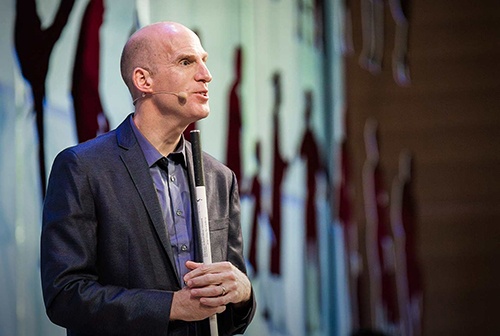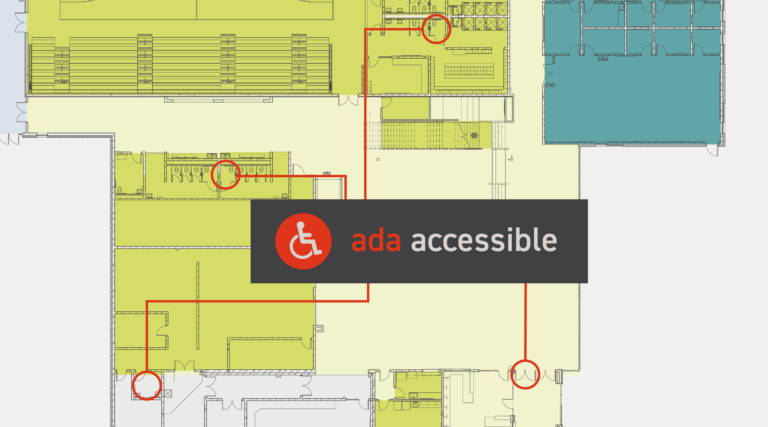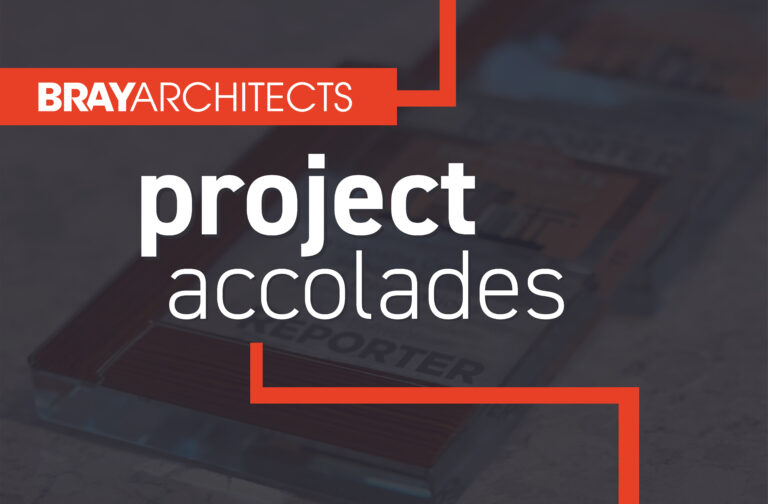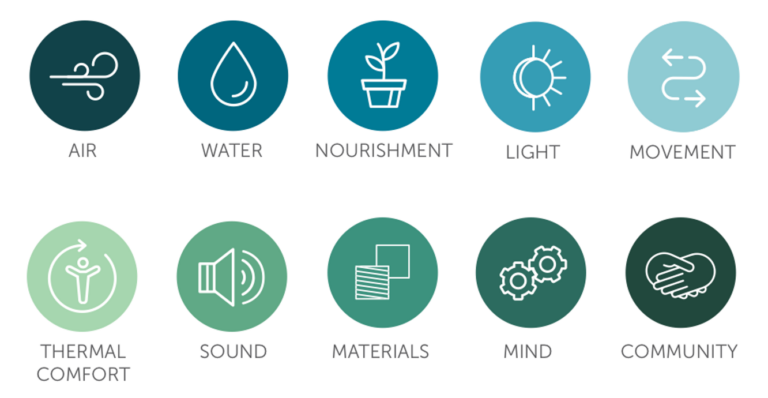Part 2: Collaborating with Architect Chris Downey
Innovative projects take teamwork. As they planned for the VisABILITY center, Bray and Beyond Vision received help from Chris Downey, a California-based architect who lost his sight in 2008 after undergoing surgery to remove a brain tumor. He continues to practice architecture, bringing a personal perspective to the design of accessible environments.
Downey has developed a specialty in his architectural practice: making spaces accessible to the blind. In addition to consulting on the Beyond Vision project, he has helped designed a new eye center at Duke University Hospital, has worked with Microsoft, and has helped the City of San Francisco with the design of their new transit center.
New Drawing Tools
“The creative process is an intellectual process,” Downey said in a feature on CBS’s 60 Minutes. “It’s how you think, not how you see. I just needed new tools.”
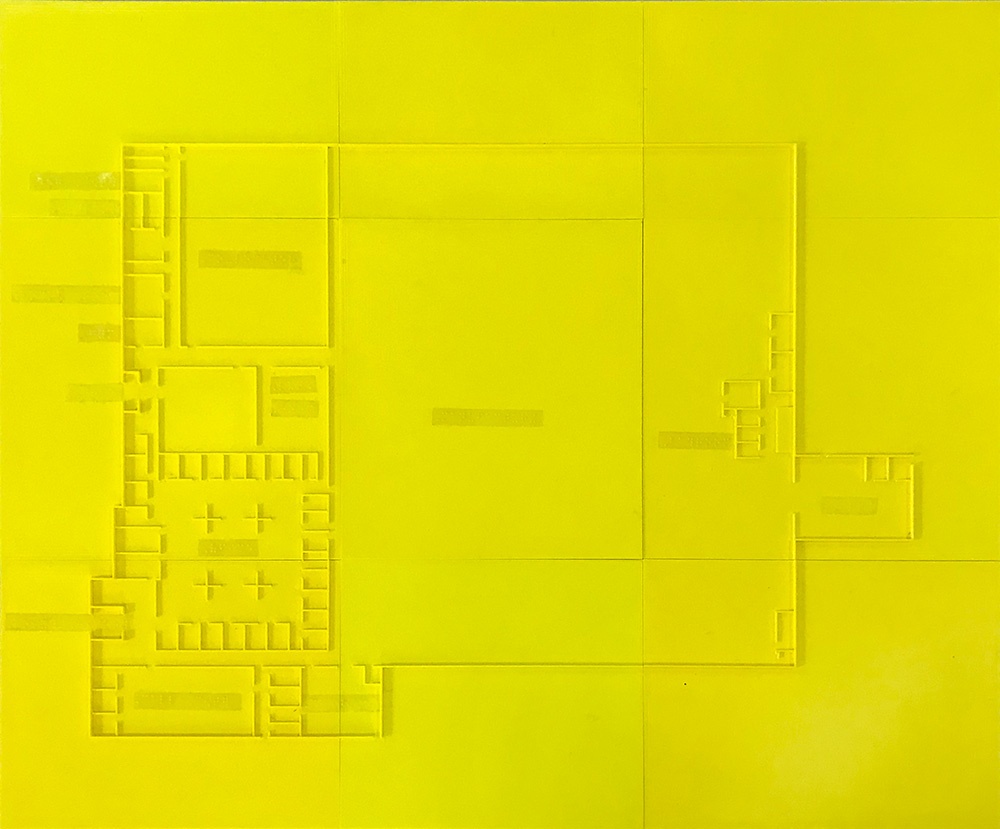
Downey still reads architectural plans through touch using 3D-printed floor plan models or lines embossed on paper. He sketches floor plan ideas by manipulating malleable wax sticks to define walls, doors, and windows. “I can mentally walk the drawing using my fingers, focusing on circulation and how people move through the building,” Downey said in an interview with the blog The Architect’s Take.
“Seeing” Through Sound
His experience of space has also changed. Without his vision, Downey’s other senses have stepped up to help him navigate the built environment. “I was really struck by the symphony of subtle sounds all around me in the city that you can hear and work with to understand where you are, how you need to move, and where you need to go,” he said in a TED Talk. For example, he can hear his way to the entrance of the building if there is a canopy over the doors. He listens for the tap of his cane on the floor or the pavement to reflect off the canopy to help him determine his position relative to the doors.
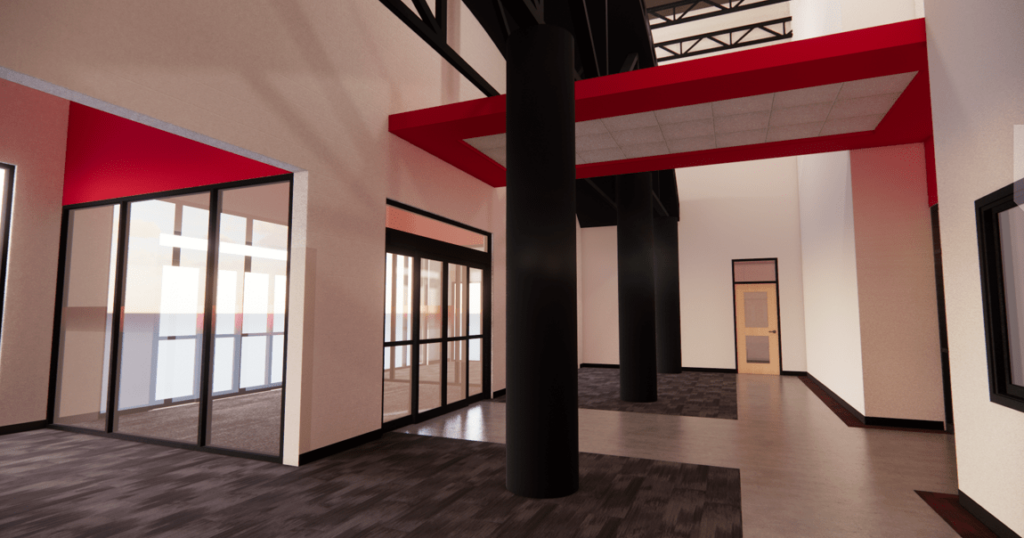
Universal Design at the VisABILITY Center
Downey incorporates principles of universal design, which are meant to accommodate individuals with disabilities and are just as appealing to people without them. He helped the Bray team applies this concept to the VisABILITY Center. For example, the design team integrated soffit canopies with acoustic ceiling tiles to help users identify entries and exits.
The building also features perpendicular pathways to ease navigation. “When designing interior space, a more regularized, orthogonal environment is easier, especially for the newly blind who need to create a mental map,” Downey said. “The regularity helps the mind to sort out the space.”
Other accessible design features inspired by Downey, Beyond Vision, and the Bray team’s research include:
- A high-contrast paint and material color schemes to distinguish horizontal and vertical surfaces
- Details such as dark-colored inlays on white countertops to increase visibility of its edges
- Material changes like the transition of sealed concrete floors to a perimeter or carpeting where the floor meets the wall (individuals using a cane can hear and feel the shift, warning that the wall is nearby)
- Material selections that minimize glare from overhead lighting on flooring and surfaces
- Wayfinding for determining the location of features and functions in the building
- Signage and graphics on glass surfaces to generate awareness for those with vision impairment
- Integration of electronic white noise in the building to accommodate those with hearing sensitivities
Read more about the specific design features of the VisABILITY center in the next section.
Read Part 3: Accessible Design in Action
Be sure to also check out:
Read Part 1: On a Mission for Accessible Spaces
Watch Low-cost, High-impact Accessible Design Solutions
Featured image, top: Chris Downey giving his TED Talk titled, “Design with the Blind in Mind.” Image from http://arch4blind.com/.
